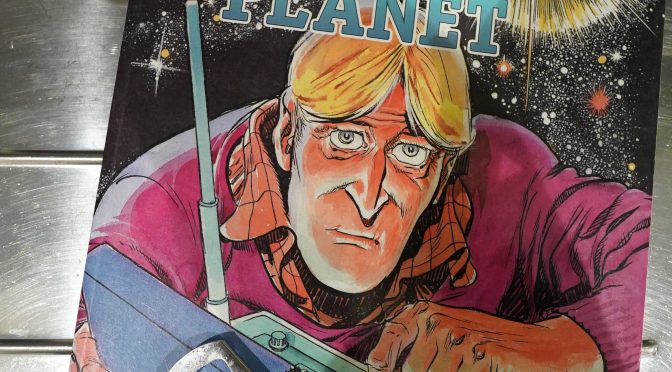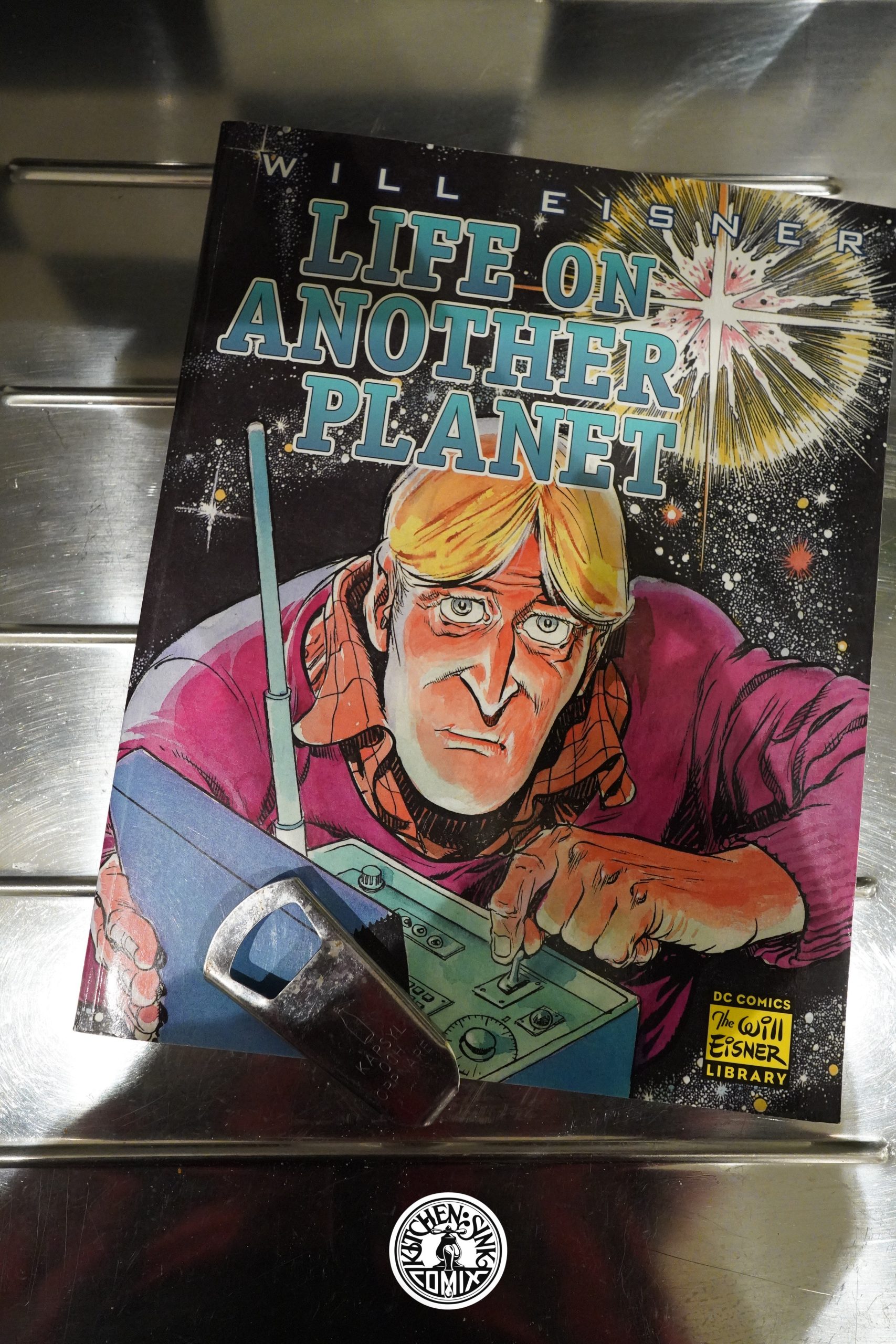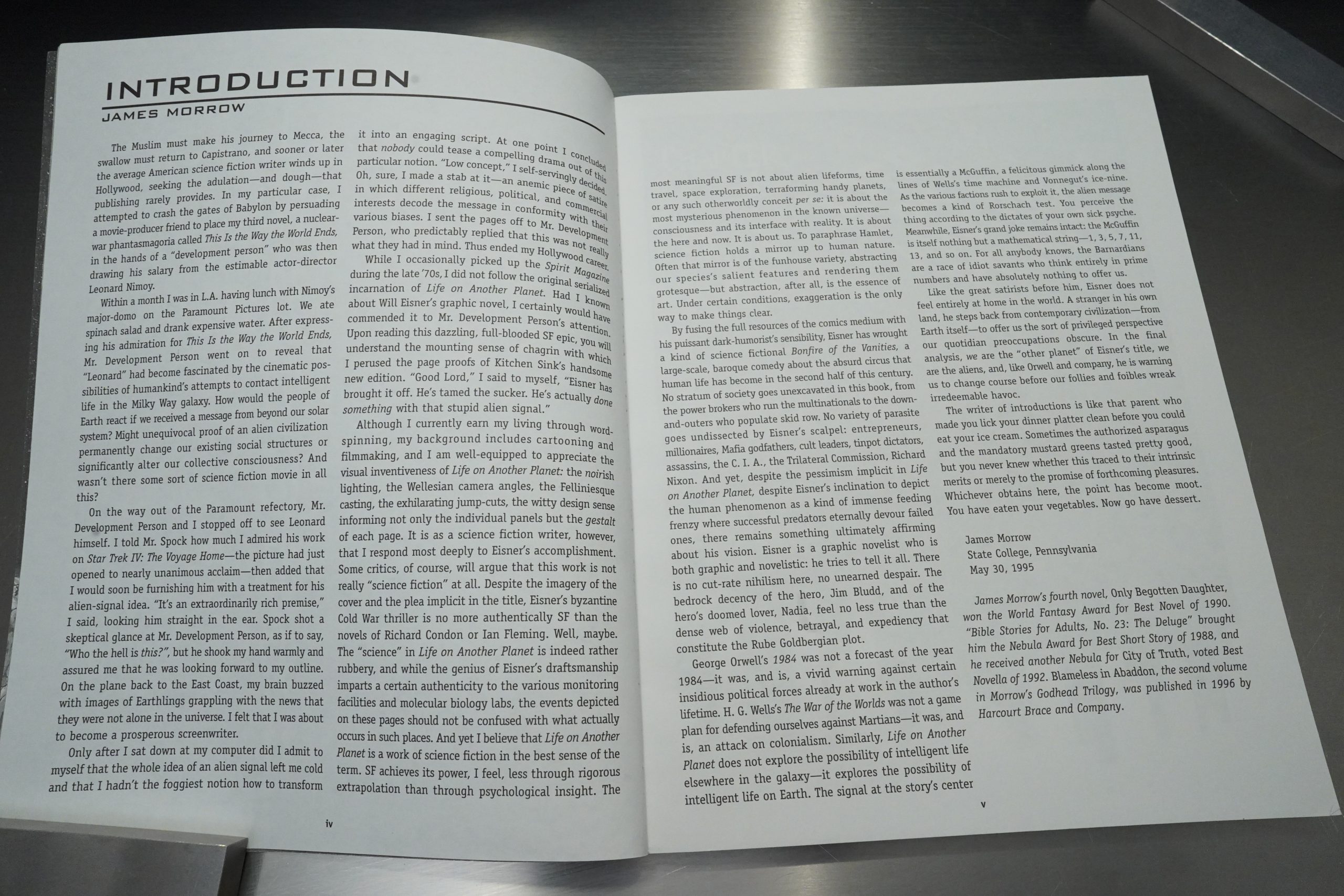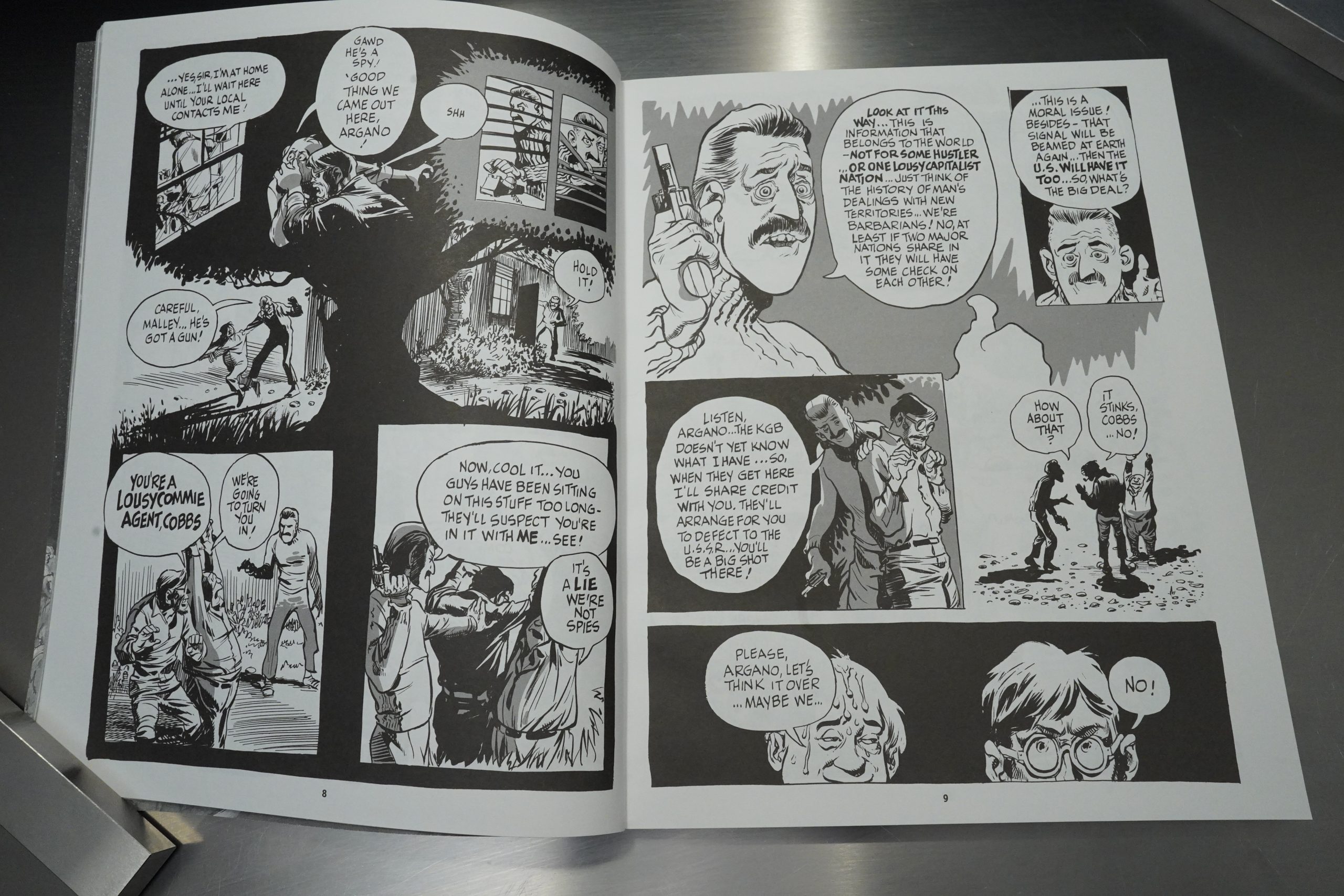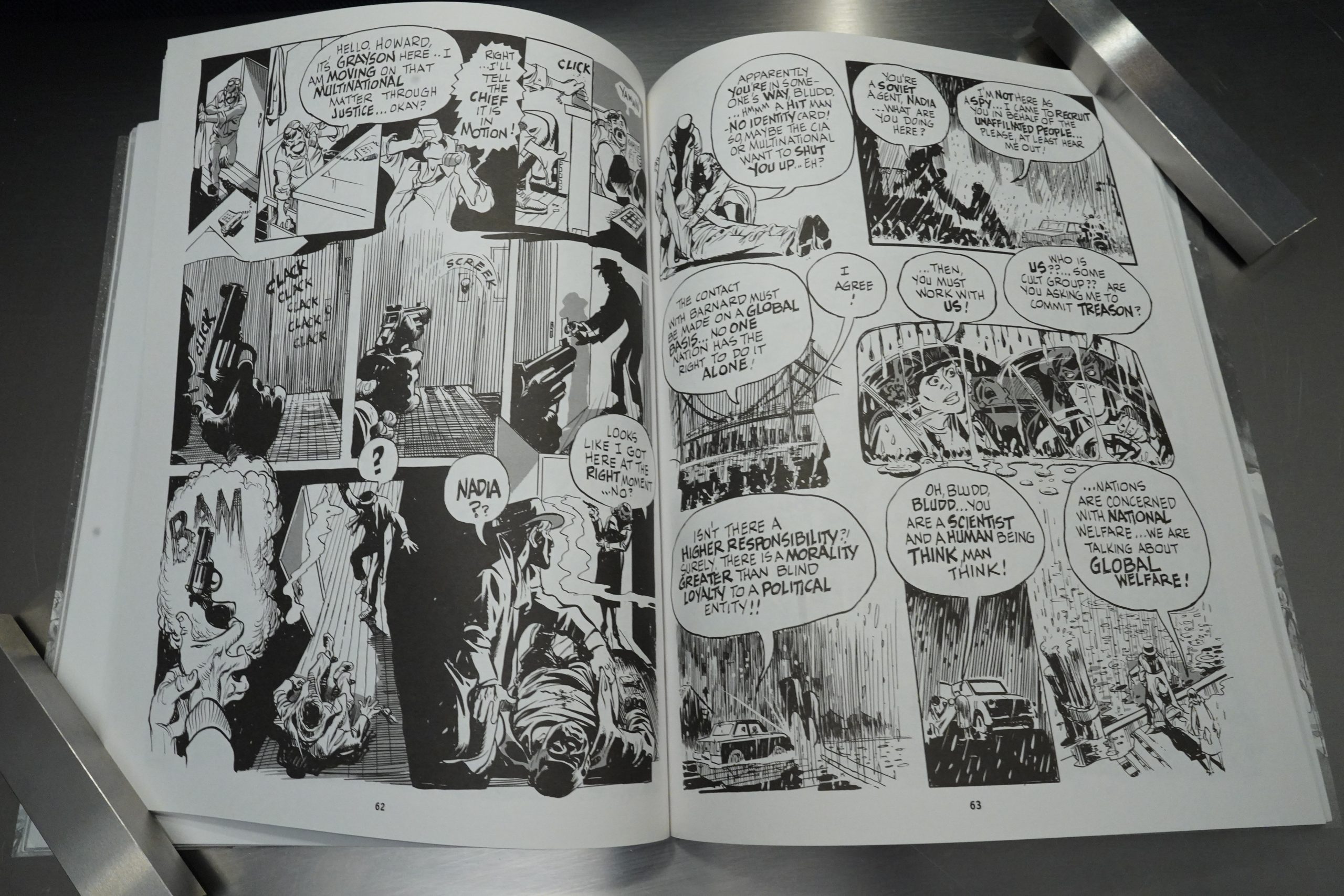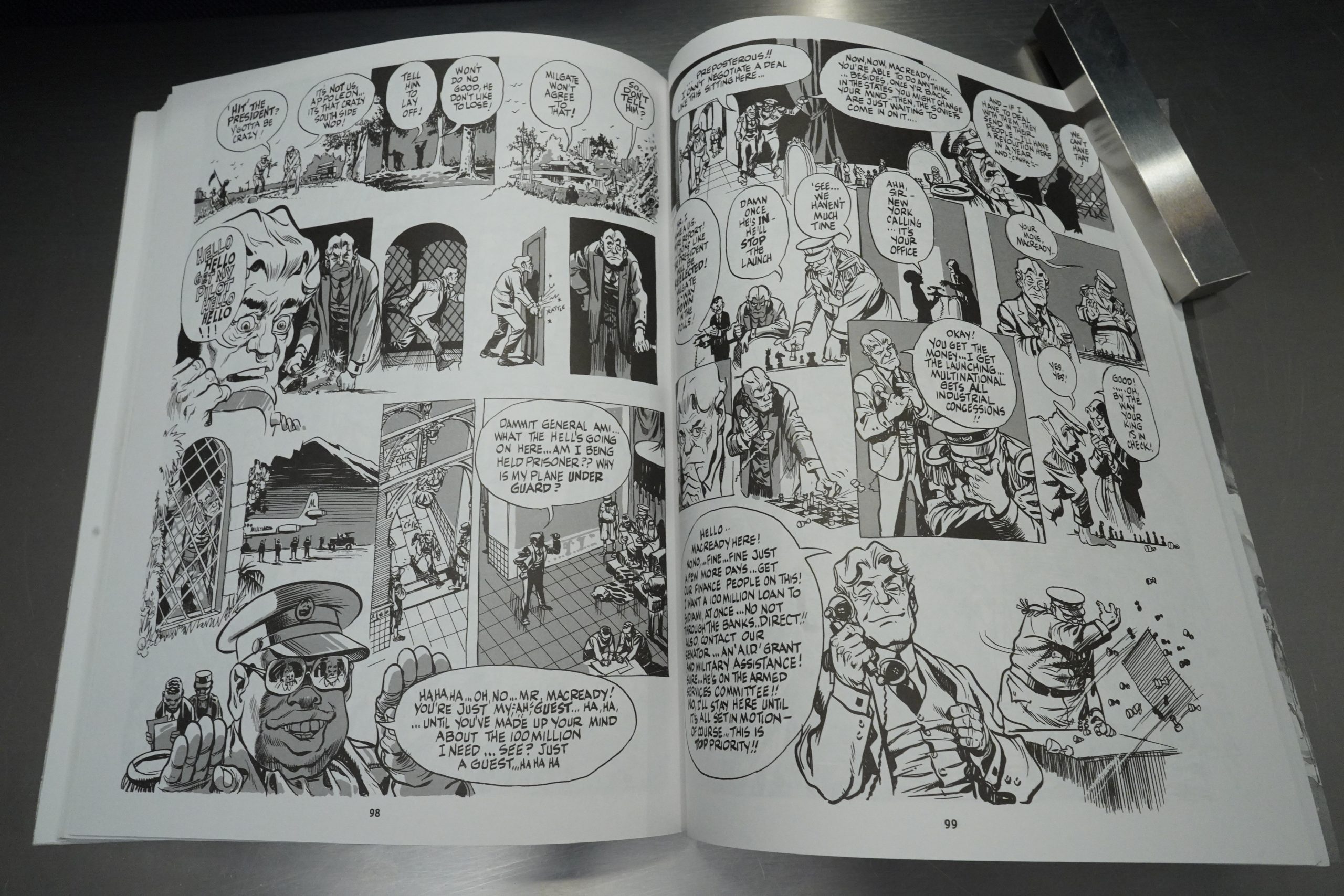Life on Another Planet (1996) by Will Eisner
Oops! I’ve bought the DC edition of this instead of the Kitchen one… Oh, well.
Oh! This is just a black and white edition of the story that was published in a luscious colour edition as Signal From Space in 1983. Well, then I’m not going to read it again now, but let’s just take a quick look at what’s what.
Well, there’s a long introduction by James Morrow, which is a name unfamiliar to me.
This was originally serialised in the Spirit magazine in black and white, if I remember correctly? It’s been a couple years now since I did that magazine… let’s see… Oh, just a year ago. And indeed, it was published in black and white there, so we’re back to the original edition, I guess. (And when it was serialised, it went under the name Life on Another Planet, so we’re back to basics here.)
The artwork’s nice, of course, and it’s well reproduced here.
The story is a bit of a convoluted mess, with many “ironic” twists.
Dale Luciano writes in The Comics Journal #67, page 41:
Harrowing Portrait of
Ruthlessness and CorruptionLIFE ON ANOTHER PLANET
In the opening panels of Will Eisner’s sec-
ond graphic novel, Life On Another Planet,
a bearded, nondescript scientist named
Argano, an employee at a radio astronomy
observatory in New Mexico, discovers a
modulated sequence of blips on his com-
puter readouts. A cryptographer, Malley,
quickly verifies what Argano immediately
suspects. The “code” is unmistakable evi-
dence Of a signal, an intelligent “message”
from another planet. Argano and Malley
confide this information to another ob-
servatory worker, Cobbs, who pinpoints
the source of the signal as the star Bernard,
a tiny planet “about ten years away—at
present space travel capacity.” All three
figures stand, delineated in silhouette and
dwarfed by the expansive, white magni-
tude of a map of the solar system; they are
men coming to grips with something larger
than themselves. [s this the opening
chapter in humankind’s greatest adven-
ture, the establishment of contact with life
forms in some other region of the solar
system? Is it a prelude to the transcendence
of nationalisms and the beginning of a
global effort to elevate humanity’s limited
horizons beyond the scope of this tiny
planet?[…]
Whatever my misgivings, Life On
Another Planet is a major new work from an
established master of the form. There are
memorable passages that could only have
been created by Eisner, and even the prob-
lematic nature of the artist’s handling Of
the material raises important questions
about the nature of the graphic story form
itself. In spite of the overriding mood of
cynicism, Eisner has also created in Bludd a
hero who is a sympathetic projection of his
Own, perhaps battered, idealism; the extent
to which one is willing to accept Bludd as a
viable protagonist will influence in large
measure how one feels about the book as a
whole. As an indictment of man’s consum-
ing self-interest, Life On Another Planet
warrants attention.
A note on the genesis Of Life On Another
Planet. Eisner prepared this material to ap-
pear serially in Kitchen Sink’s The Spirit
reprint series. In issues and #20, the
first two chapters were published in a con-
fusing, topsy-turvy pull-out section that
Eisner and the publisher hoped would be
removed and folded into the equivalent of
a paperback-sized book. Readers protested
vigorously against the format, and the re-
maining chapters were run in issues
through in a more coherent, tradi-
tional layout. Plans call for Life On Another
Planet to be syndicated in Europe, and
Eisner thereafter plans to publish a full-
color version in America. The artist is
redrawing and retouching the first two
chapters in preparation for its future ap-
pearances.
This is the two hundred and fourth post in the Entire Kitchen Sink blog series.
